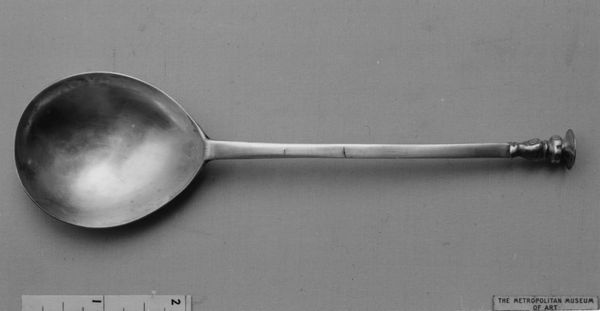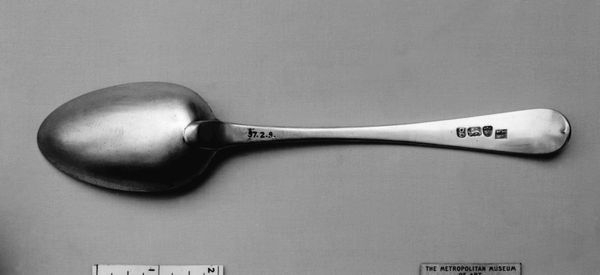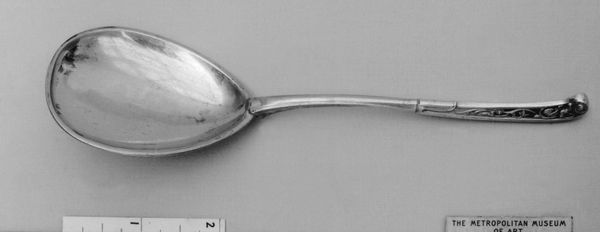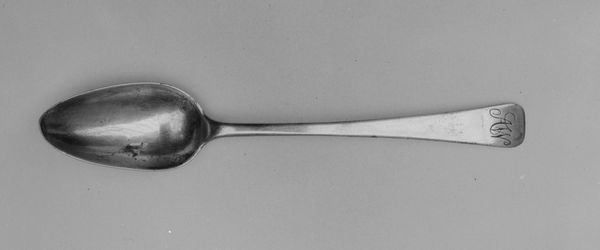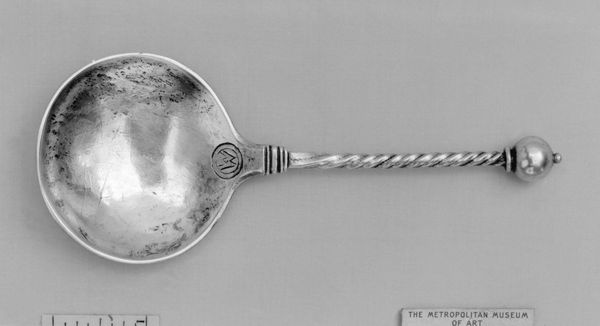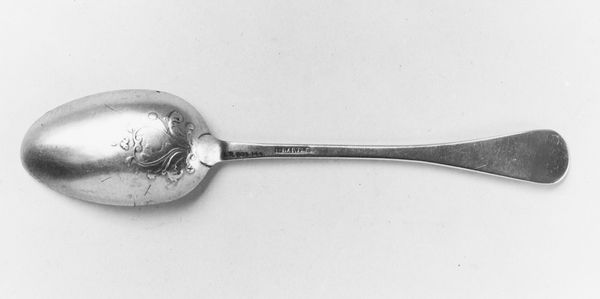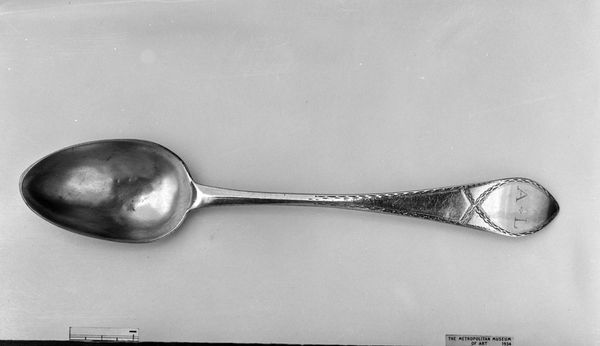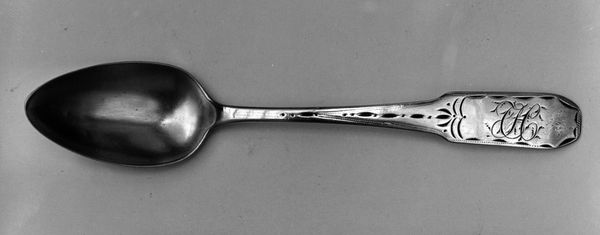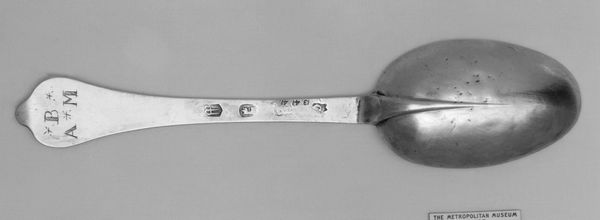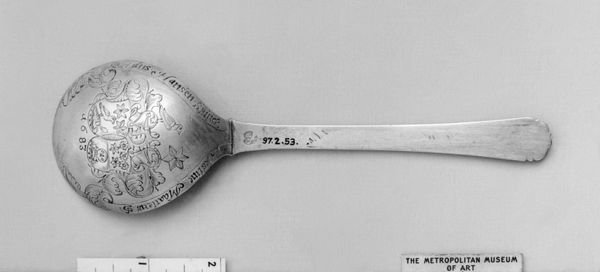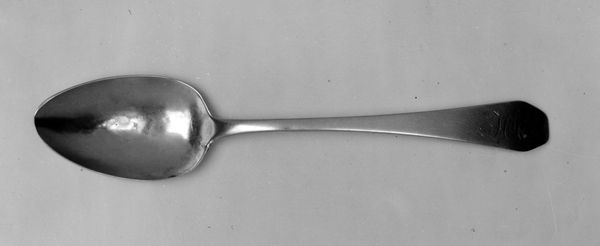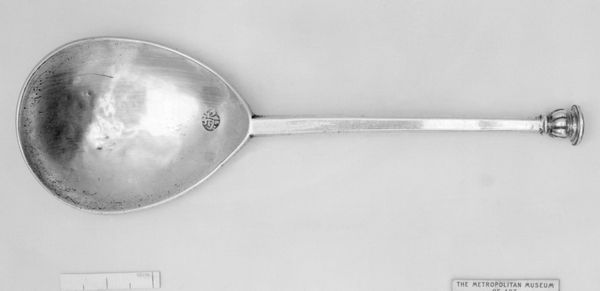
silver, metal, metalwork-silver, sculpture
#
silver
#
baroque
#
metal
#
metalwork-silver
#
sculpture
#
decorative-art
Dimensions: 6 1/2 x 2 1/2 in. (16.5 x 6.4 cm)
Copyright: Public Domain
Editor: Here we have a silver "Seal-top spoon" crafted around 1633 or 1634, and currently residing at The Met. It looks so pristine! I mean, just think of all the hands that touched this object. What catches your eye about it? Curator: This piece speaks volumes about early modern material culture. Forget the romantic idea of the artist as a solitary genius; look at the labor involved. The silversmith, of course, but also the miners extracting the silver, the transporters moving it, the polishers… even the consumer enacting their social status through use. It is a whole system of making and consuming. Does the mark on the bowl spark any thoughts? Editor: I guess it’s there to denote who produced it, a maker’s mark? So kind of a signature from that artisan to ensure it has passed through the appropriate labour? Curator: Precisely. It’s a form of branding, a mark of quality, and it points directly back to the silversmith’s workshop and the skill inherent to that individual. A guarantee of the material and craft, and perhaps social standing too, through this marker? How does this change your perception of the spoon now? Editor: Thinking about all the labor involved really transforms it from just a pretty object into a representation of a complex economic and social system! The spoon then isn't just an artwork, but it's also documentation of society. Curator: Exactly! It's not simply "decorative art"; it embodies networks of production, trade, and social hierarchy rendered visible through a single utensil. Editor: That's amazing. I hadn't considered all the processes tied to it. I’ll definitely look at these types of artworks differently now.
Comments
No comments
Be the first to comment and join the conversation on the ultimate creative platform.

